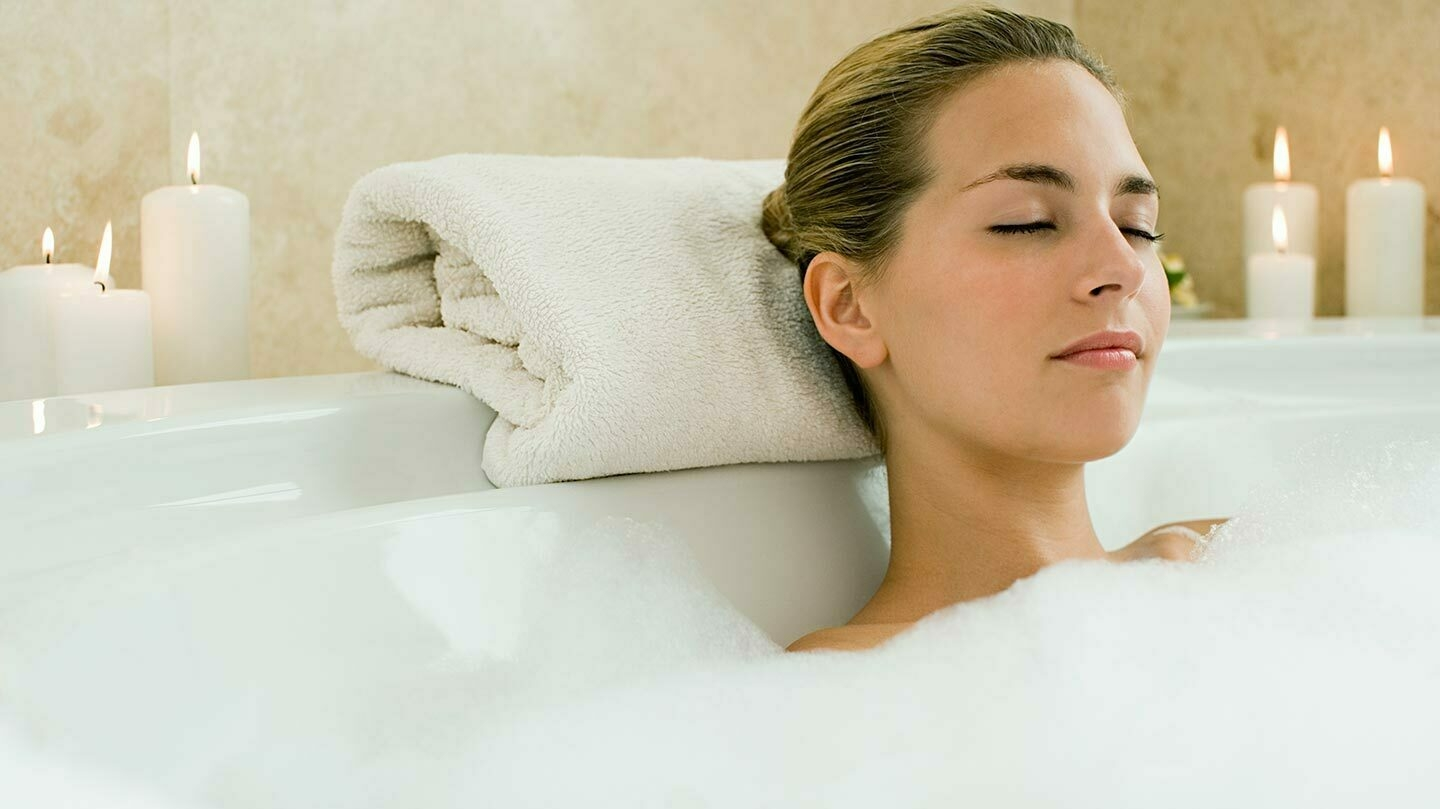Balneotherapy, from the Latin for "bath", is the term for the therapeutic use of bathing. Spa baths were traditionally filled with water from thermal hot springs or the sea, but you'll now find an array of fragrant and restorative ingredients added to warm water to make your bathing experience all the more enjoyable and effective.
A spa bath is a spa treatment that usually takes place in a private treatment room, and will be just for you, or for you and your partner. The bathing experience will certainly feel more luxurious than your one at home. To make the treatment all the more relaxing, your therapist will dim the lights, heat the room to a cosy temperature, and she may light scented candles to create soothing aromas. Whilst just being in warm or hot water cleanses and relaxes you, it is what you add to the water, and the time you take over the ritual, which really distinguishes your experience and ups the wellness factor. These types of baths are different to a regular hot tub or whirlpool bath and some day spas have indulgent freestanding baths or double ended baths for two.
Here are the most common types of spa bath.
Brine, salt, and mineral baths
A bath containing essential oils and/or herbs. As you bathe, you breathe in the aromas of whatever has been added, and let the warm water ease your aches and pains.
Essential oils or herbs are added to the water or rubbed onto your skin before you get into the bath. These have a variety of effects. You might have eucalyptus added to the bath, which is particularly good if you have a cold or blocked sinuses. You might have lavender to soothe and relax you. The water activates the oils and makes their effects more intense, so you feel truly relaxed; a real aromatic treat.
Minerals – and the salts, muds, and water containing them -- have been renowned for their health-benefits for centuries. People still travel to find them in order to have their minds, bodies and souls refreshed, cleansed and renewed, and to treat specific conditions from psoriasis to osteoarthritis. Great buildings were built in Turkey and North Africa and in Roman-ruled countries of the world to harness the mineral waters of the land and provide a pleasurable and organised place to experience them.
If you go to a spa near a natural mineral spring, the spa will probably use the spring to supply water to their pools and baths, allowing you to bathe in the fresh, mineral-rich waters. At a more conventional spa, a mineral bath is likely to involve a bath to which minerals and salts have been added. The minerals
Flower petals and essences are added to the water. There are different versions of these baths, including Japanese flower bath, and Indian blossom, each one promises a slightly different experience. Take your pick!
A favourite pre-treatment ritual, or part of a thermal suite. A foot bath may take the form of a shallow bowl of warm water infused with herbal or plant oils, which your therapist will soak your feet in to cleanse and relax you. Alternatively, foot baths in a thermal suite may be small, low-level basins filled with warm water, sometimes with massage jets.
This hot bath bubbles clean, oxygenated water around you. The soft, bubbly water feels great on your skin.
We know it doesn't sound promising, but peat is full of proteins and minerals that are soothing for your skin, and it actually smells pleasantly musty and earthy. Sometimes, spas will mix the peat with other ingredients to make a sweet-smelling herbal paste, which is rubbed into your skin by you or a therapist before your bath. Alternatively, peat may be added to the water.
At a spa, you might have a mineral-style bath whose ingredients are mud- or algae-based. Alternatively, this treatment is as it sounds: you immerse yourself in mud or algae. Both are actually surprisingly warming and relaxing - once you've got over the initial oddness of getting into a bath full of goo. The aim is to detoxify and deeply relax your muscles and leave your skin feeling soft and hydrated.
A seaweed bath is a treatment that is most often found at coastal spas, as the seaweed is commonly freshly picked and washed for your treatment. Though it may feel slightly odd with the slippery plant next to your skin, the seaweed is packed with beneficial vitamins and minerals, and your therapist will probably add fragrant essential oils to the water, too.

Summer Spy
16th May 2013
Spy Likes:
Warmth and sunshine; spas which take me away to another country; fruit infused waters; beach-worth pedicures; deep tissue massages.
Spy Dislikes:
High footfalls; treatments that over promise and under deliver; heavy lunches; loungers drapped in used towels.
